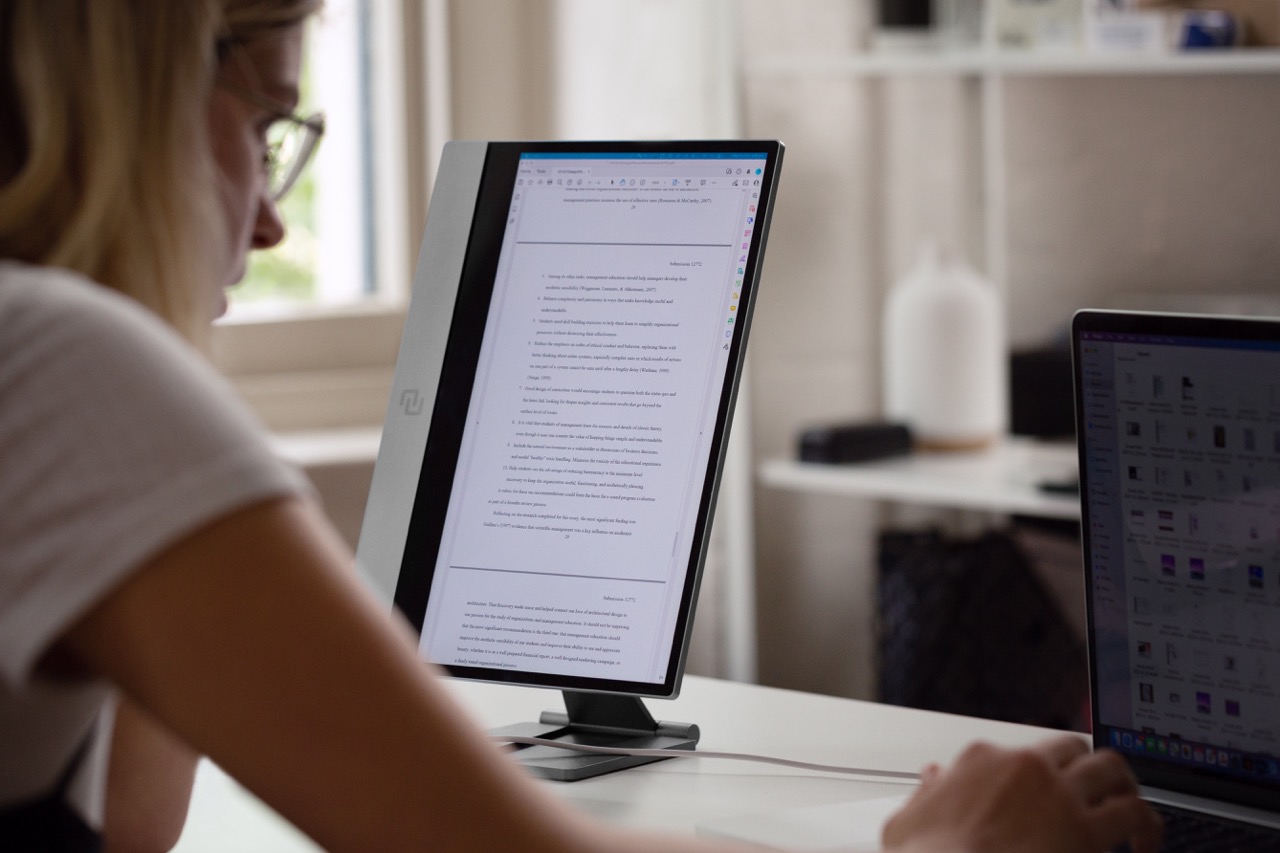After a successful Kickstarter campaign back in 2019, the Espresso Display is back with version 2 of its USB-C powered, ultraportable second monitor for people who love to get things done while on the road. Darrell tried out a preproduction unit of the original version of the display a couple of years ago, concluding that “the Espresso Display manages to stand out,” and it looks like the company took a winning formula and doubled down on it. I took a closer look to see how the display performs on a 32,000 km trip to the other side of the world.
There are many different ways of getting work done. Some people are able to use a laptop as their sole tool for everything they do. Sadly, I’m utterly spoiled by my at-home setup; two 27-inch 4K monitors mean I have near-infinite screen real estate, and ho boy do I like to spread all those windows all over the place.
I’m writing this in Australia — 16,000 km away from my usual home — and you’ll be unsurprised to learn that my regular gaming rig with all its accouterments didn’t fit in my hand luggage. What did fit easily, though, was the innovative setup from Espresso. The company sent me a 15″ touch screen display to review, along with an assortment of accessories. The $749 screen plus the $99 espressoStand, the $69 espressoCase and the $119 espressoPen adds up to a pretty hefty $1,036 price tag. That puts the screen within range of an iPad Pro, which can be used as a second screen for your computer, too, so you’ve got to really want to take your show on the road to put down that much cash.
So, is it worth it? The Espresso screen is super thin, weighs next to nothing, and surprised me by easily fitting into my laptop bag along with my M1 MacBook Air. The screen itself is powered by USB-C, so you can power it from the laptop. Now, the diminutive battery in the MacBook Air means that the 7W draw of the display sucks down a lot of additional power. At first, I suspected that might be a dealbreaker, but when I started using the setup a lot more, I realized it wasn’t a big deal: If you’re settling in somewhere long enough that you have time and space to set up a second display, you’re probably not far away from a power source anyway. Plug the laptop into power, and you’re set. Or, if you leave the second display set up for a while (e.g., on the desk in your hotel room), you can plug power directly into the display. It has two USB-C ports and can deliver power to the laptop; super clever, and means you only have to plug in one cable when you want to get some work done.

Espresso Display in vertical mode. Image Credit: Espresso
The curiously named screen has a good story behind its name, though: The name “espresso” is derived from the idea that an espresso coffee gives you that shot of energy and productivity you need to get things done effectively. “We think the Display does the same thing — it’s portable, compact, effective and packs a punch so our users can work from anywhere with maximum focus,” a spokesperson for the company told me. Nice touch: Each of the Espresso team members has their favorite coffee order as part of their email signature. Goofy? Of course, but a fun detail nonetheless.
The Espresso Display has a number of quirks that fall into the same category as the power consumption issue; at first glance, it seems like a disaster, but when you’re using the display, the objection melts away. Another example is the resolution of the screen; both the $529 13-inch monitor, the $669 13-inch monitor with touch-screen capabilities and the range-topping $749 15-inch screen with touch screen pack only 1920 x 1080 resolutions (roughly 2 million pixels). Compare that with the 12-inch iPad Pro, which is smaller but packs a 2048 x 2732 (roughly 5.6 million pixels), and on paper, the Espresso Display doesn’t make sense. Not so fast, though, because the iPad — like the iPhone, which introduced the concept of retina displays — is designed to be handheld. When you leave the Espresso Display propped up against its protective lid, or on the stand, it can be far enough away from your eyes that it doesn’t make much of a difference in most work situations, in my experience.
This is where the inclusion of a pen as an optional accessory confuses the positioning of the Espresso Display, I think: The screen is designed to sit on your desk, farther away from your face than a handheld device. As a result, the slightly limited resolution doesn’t bother me at all. Pick it up and use it as a touch screen, and things shift right away; the text isn’t as crisp as on my MacBook Air. (That makes sense, too, as the Air packs a 2560 x 1600 display, which is 4 million pixels, give or take, and text looks smooth as butter.) And obviously, to use it with the pen, you have to get up close and personal with it.
Another issue I ran into was that the USB-C cables I brought with me on my trip turned out to be power and data cables that didn’t support displays. Entirely my fault, of course, but feel free to insert a rant here about how cables that fit in one socket (USB-C) really ought to be interchangeable with other cables that fit in that socket. I’m aware that there’s a ton of technical and economical reasons why that isn’t feasible, but it’s a terrible user experience to have a USB-C cable that doesn’t have all the leads to transport the DisplayPort standard.
The Espresso Display comes with some really clever software that further enhances its capabilities. Turn the screen sideways to landscape orientation on the magnetic stand, and it reports its change of orientation to the computer, which then responds by rotating the screen as well. Little details like that, the twin USB-C ports and other clever design features make you realize that the team has gone a long way to observe users and build a user-centric product.
The company told me it is planning to roll out additional functionality for the displays via its espressoFlow software, including a number of features that will start stepping on the toes of Wacom and other smart tablet tools for graphic designers. It has shipped screens to more than 10,000 people, and the team has grown to more than 20 full-time staff, with ambitious road maps and aggressive expansion plans.
Would I spend $1,000 of my own money on this solution? It depends, honestly. These days, I do most of my work in one of two modes: at the command center at home, where I have a standing desk, 64GB of RAM, fast Intel i9 processors and may-as-well-be-infinite screen real estate. The other mode is on the road — for example, when I’m at TechCrunch’s events, or out and about reviewing devices or talking to founders. In that mode, my MacBook Air and an audio recorder is all I need. In neither work mode does the Espresso Display make a lot of sense.
However, in the before-times, when travel was easier, I have definitely worked on the road for many weeks and months on end. In that universe, I was often pining for a second screen and the additional flexibility to work from anywhere. Your mileage will vary, of course, but for people who spend a lot of extended time on the road (or who need a quick-to-pack-away second monitor solution), Espresso Display might be just the thing.
from TechCrunch https://ift.tt/FANcS3h



No comments:
Post a Comment